Metallic material
Innovation | Professionalism
Integrity | Efficiency
Metallic material
Innovation | Professionalism
Integrity | Efficiency
Located between the rear compartment and passenger seat, the rear floor is an important component of the chassis. It is typically constructed from materials such as steel and aluminum alloy to ensure it can effectively sustain load-bearing weight and deliver optimum rigidity. Design considerations cover the entirety of a car’s structure, including suspension components and occupant safety, as well as other elements like soundproofing and thermal insulation. Advanced models may also feature integrated seating heating, ventilation systems and other amenities.
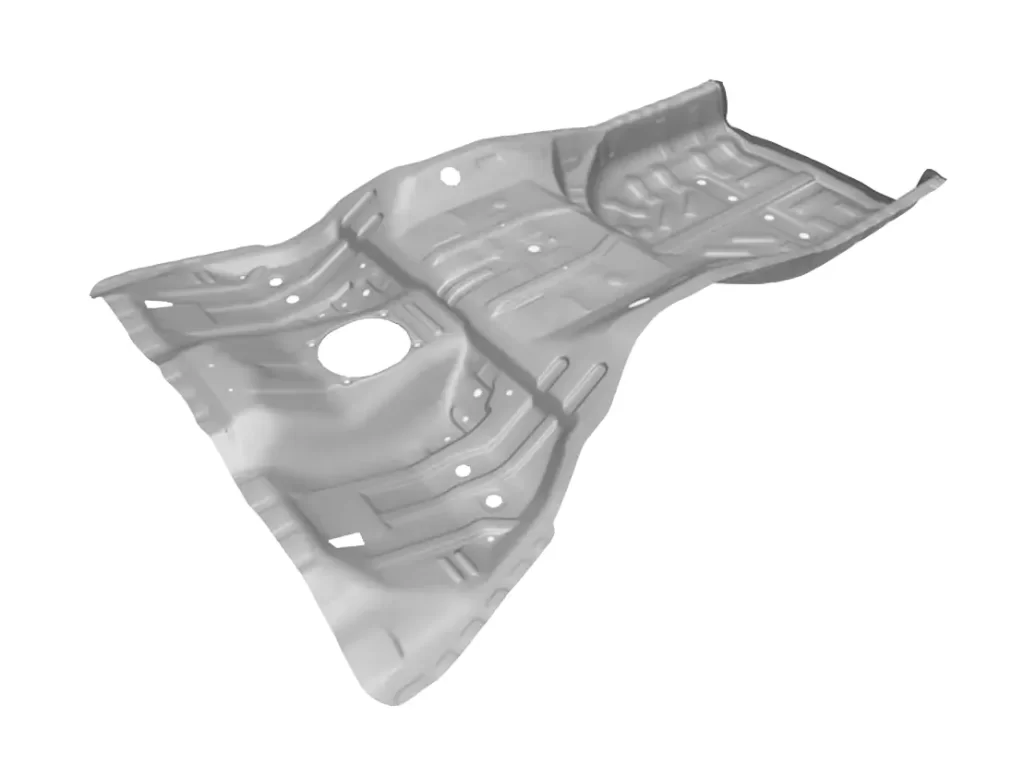
Steel contains a certain amount of solid solution carbon and nitrogen atoms, which contribute to its strength. Strengthening elements like phosphorus and manganese can be added to further increase its strength. Once processed and formed, the steel is baked at a specific temperature, which results in age hardening and a further increase in yield strength. This type of steel is commonly used in the outer coverings of automotive vehicles, and its microstructure is predominantly ferrite.
| Grade | YS(MPa) | TS(MPa) | EL(%) | r | n | BH2(MPa) |
| HC180BD+Z-T | 180-240 | 300-360 | ≥34% | ≥1.5 | ≥0.16 | ≥30 |
Grade: HC180BD+Z-T
C(max): 0.04
Mn(max): 1
Si(max): 0.5
The Rear Longitudinal Center Section is a critical structural component of a car’s chassis. It runs along the center of the underside of the vehicle and typically comprises of high-strength steel to support the car’s rear end and the forces generated during acceleration, deceleration, and cornering. This part works in conjunction with other components such as the front longitudinal member and cross members to provide rigidity and stability. Furthermore, it is designed to absorb and disperse impact forces in collisions for improved occupant safety.
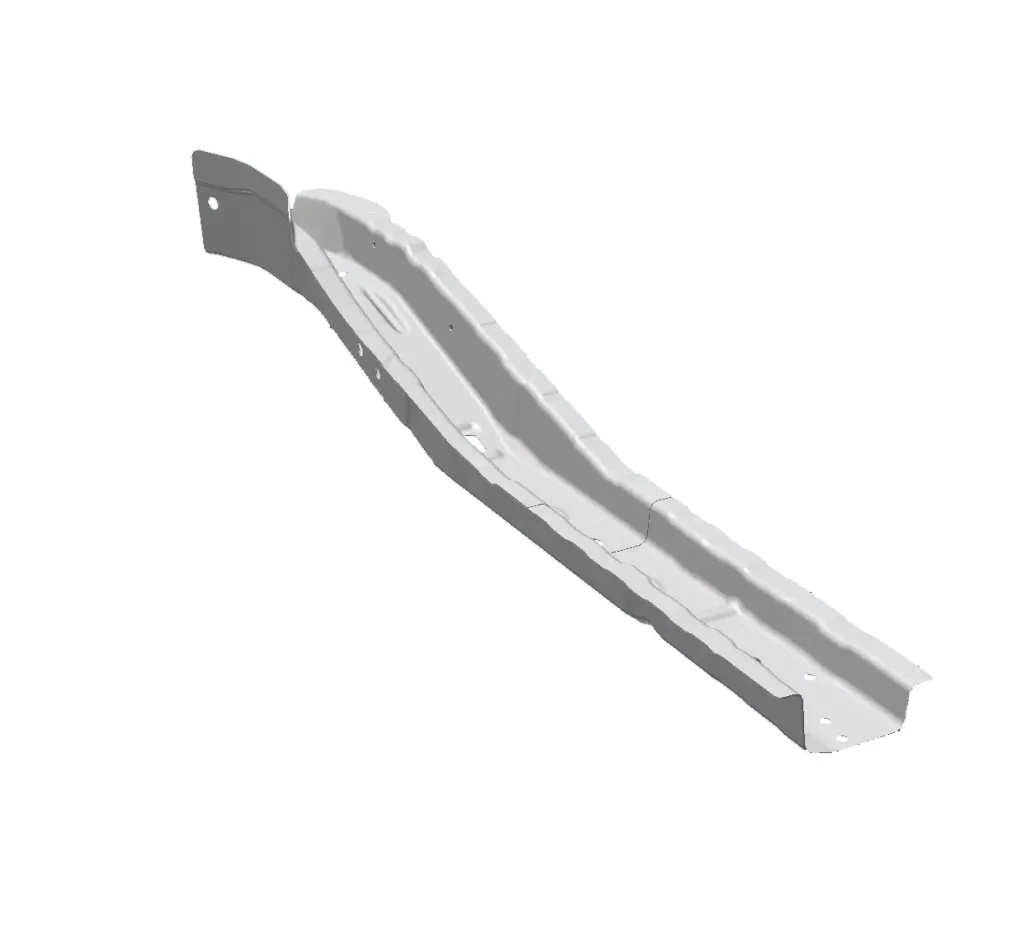
The microstructure of this steel is a combination of ferrite and martensite, with the martensite structure dispersed in the form of islands within the ferrite matrix. This dual-phase structure is highly desirable for automotive structural parts due to its low yield ratio, high work hardening index, and bake hardening value.
| Grade | YS(MPa) | TS(MPa) | EL(%) | r | n | BH2(MPa) |
| HC340/590DPD+Z | 290-370 | ≥500 | ≥27% | – | ≥0.15 | – |
| HC420/780DPD+Z | 420-550 | ≥780 | ≥17% | – | – | – |
Grade: HC340/590DPD+Z
C(max): 0.15
Mn(max): 2.5
Si(max): 0.6
Grade: HC420/780DPD+Z
C(max): 0.18
Mn(max): 2.5
Si(max): 0.8
The Rear Longitudinal Front Section refers to the front section of the rear longitudinal member, a component underneath the vehicle’s floor. This member is an essential part of the chassis and aids in transferring loads and forces from the suspension to the body. The Front Section usually connects to the Center and Rear Sections to form a complete framework, which is often made from high-strength steel in order to tolerate diverse pressures. Crucially, it helps guarantee stability and strength for everyday driving and during demanding scenarios – like high-velocity maneuvers or collisions.
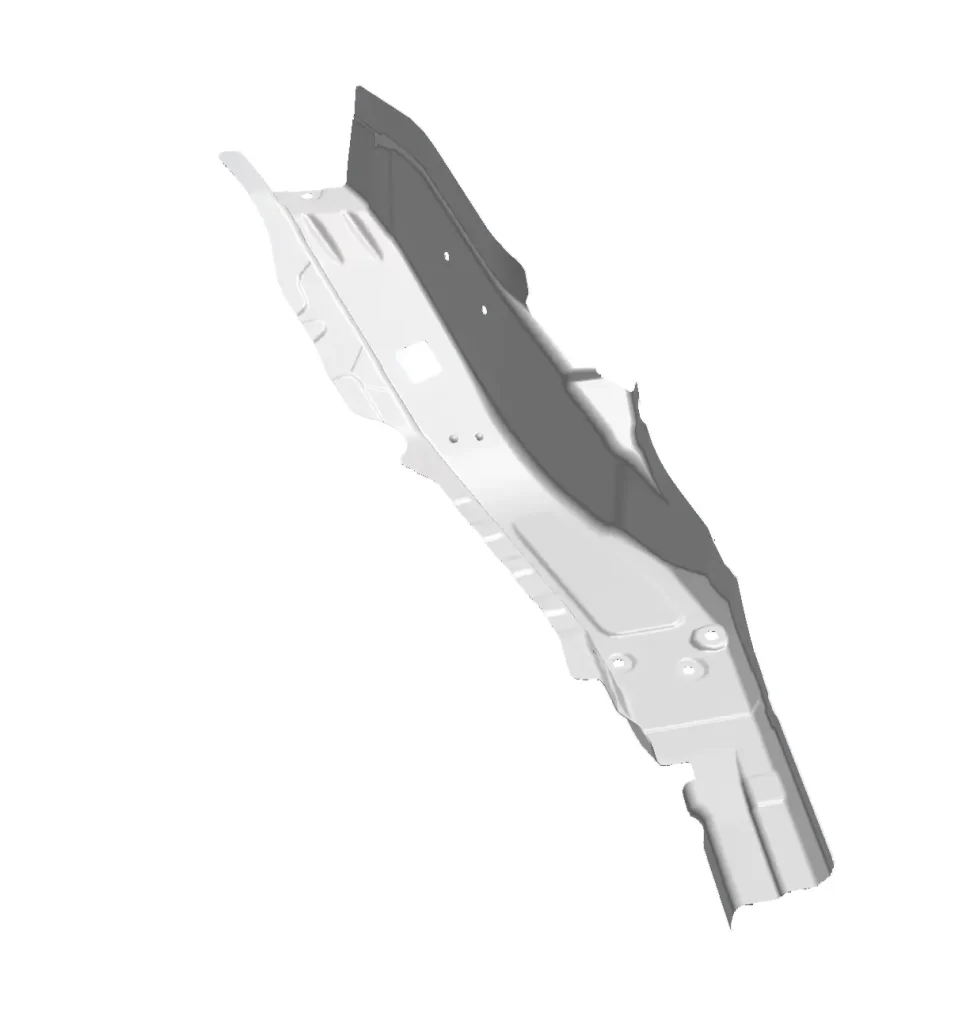
Phase transformation induced plasticity (TRIP) steel consists of a microstructure composed of ferrite, bainite, and retained austenite. During the forming process, the retained austenite undergoes transformation into martensite, leading to an enhancement in the material’s plastic deformation ability and resulting in high strength and good plasticity. This material possesses favorable properties such as a high n value, excellent formability, and high impact absorption energy.
| Grade | YS(MPa) | TS(MPa) | EL(%) | r | n | BH2(MPa) |
| HC380/590TR | 380-480 | ≥590 | ≥28% | – | ≥0.2 | – |
Grade: HC380/590TR
C(max): 0.23
Mn(max): 2
Si(max): 1.8
The third crossmember, also known as the third cross brace, is an essential structural element in the underbody of a vehicle. Typically made from steel, this transverse connection point is positioned between the front and rear axles, providing additional support to the chassis to help distribute weight evenly and improve overall stability. It not only enhances handling and performance by reducing body roll during cornering and creating a more rigid platform for the suspension system, but also helps absorb energy from impacts and provide additional protection to passengers in vehicle collisions. Additionally, many underbody components like the exhaust system, fuel tank, and rear suspension are mounted on the third crossmember thanks to its capacity to withstand torsion, bending and compression forces.
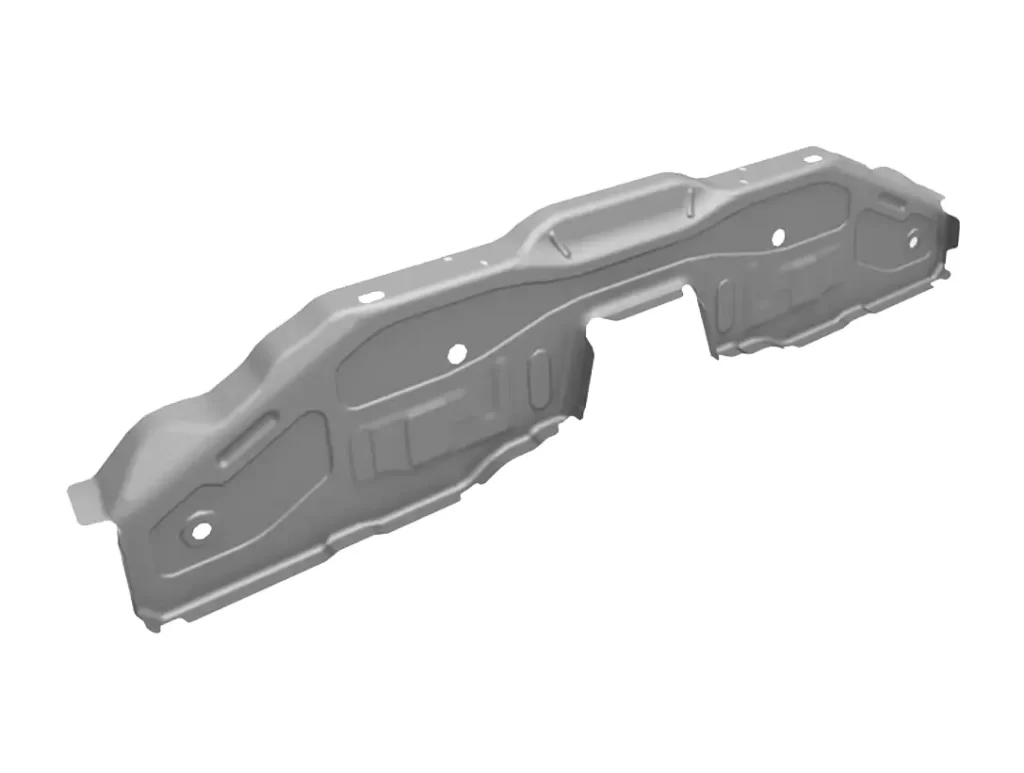
This steel’s microstructure consists of ferrite and martensite in a dual-phase arrangement, where the martensite structure is dispersed as islands within the ferrite matrix. This unique structure makes it an ideal choice for automotive structural parts, as it exhibits a low yield ratio, high work hardening index, and an excellent bake hardening value.
| Grade | YS(MPa) | TS(MPa) | EL(%) | r | n | BH2(MPa) |
| HC420/780DPD+Z | 420-550 | ≥780 | ≥17% | – | – | – |
Grade: HC420/780DPD+Z
C(max): 0.18
Mn(max): 2.5
Si(max): 0.8
The fourth crossmember is a structural component of a vehicle’s chassis that provides additional support to the underbody structure. It is typically made of high-strength steel and is positioned in the middle of the vehicle’s chassis, running from left to right.
As the name suggests, the fourth crossmember is the fourth transverse connection point in the underbody structure of the vehicle, located between the front and rear axles. It is designed to improve the overall strength and rigidity of the vehicle’s chassis by distributing the weight of the vehicle evenly.
The fourth crossmember plays an important role in enhancing the vehicle’s handling and performance by improving its stability, particularly during high-speed driving and sharp turns. It also helps to absorb and dissipate some of the impact energy in the event of a collision, providing additional protection to the vehicle occupants.
In addition, the fourth crossmember is an important mounting point for various underbody components, such as the exhaust system, fuel tank, and rear suspension. It is designed to withstand a wide range of stresses and forces, including torsion, bending, and compression.
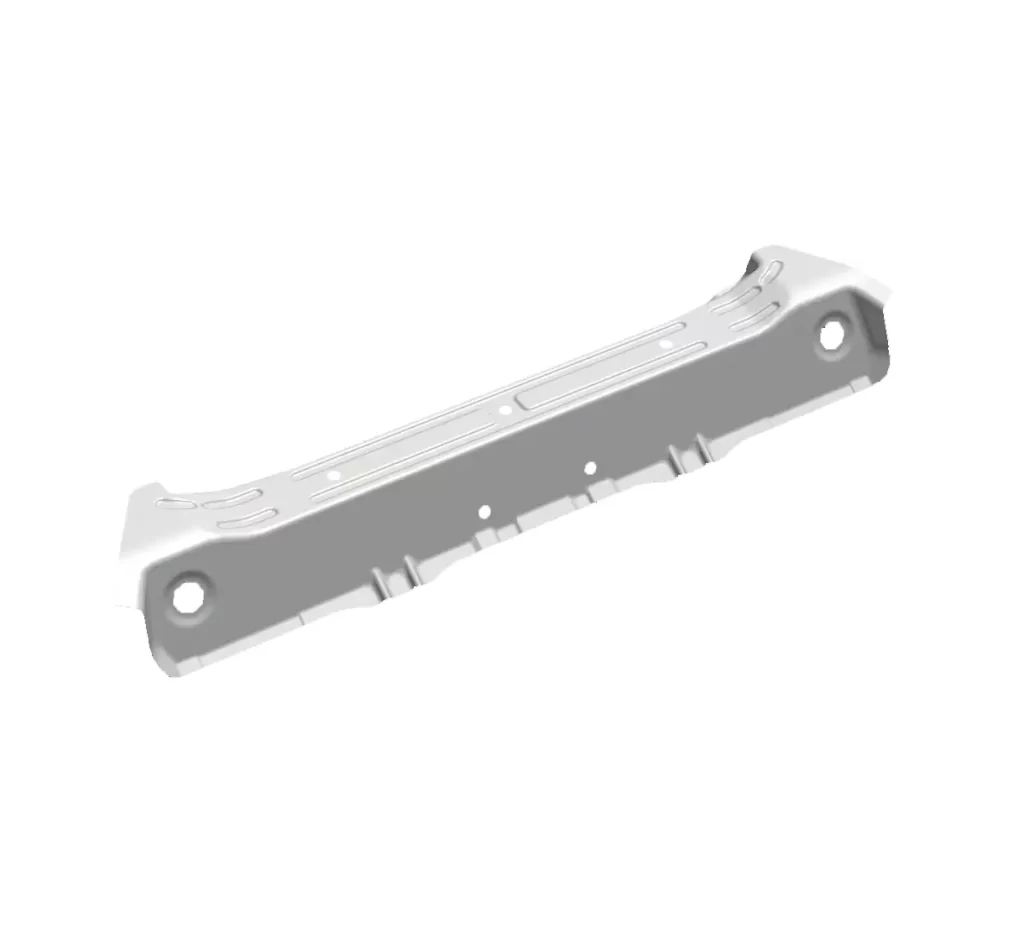
The microstructure of this steel comprises a dual-phase arrangement of ferrite and martensite, where the latter is dispersed as islands within the ferrite matrix. Its distinct structure renders it a top pick for automotive structural components, displaying a low yield ratio, high work hardening index, and exceptional bake hardening value.
| Grade | YS(MPa) | TS(MPa) | EL(%) | r | n | BH2(MPa) |
| HC340/590DP | 340-440 | ≥590 | ≥22% | – | ≥0.14 | – |
Grade: HC340/590DP
C(max): 0.15
Mn(max): 2.5
Si(max): 0.6
The fifth crossmember is an important structural component in a vehicle’s underbody structure. It is positioned towards the rear of the vehicle, typically between the rear wheels, and is designed to improve the overall strength and rigidity of the vehicle’s chassis.
As the name suggests, the fifth crossmember is the fifth transverse connection point in the underbody structure of the vehicle, located behind the fourth crossmember. It plays a crucial role in distributing the weight of the vehicle evenly and reducing torsional flex, which in turn helps to improve the vehicle’s handling and stability.
The fifth crossmember is typically made of high-strength steel or other lightweight yet strong materials to ensure maximum durability and reliability. It is also engineered to be aerodynamic and contribute to the vehicle’s overall efficiency and performance.
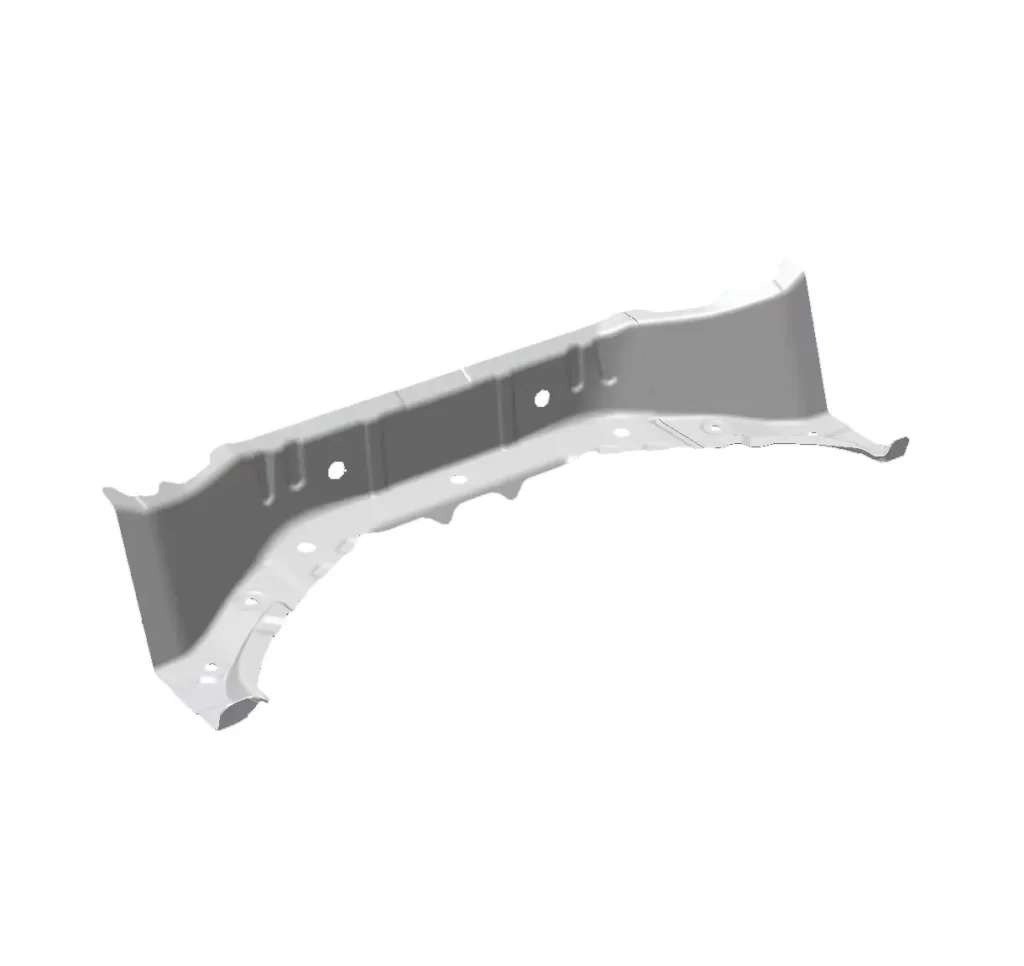
Dual phase steel is a preferred material for automotive structural components due to its microstructure, which mainly comprises of ferrite and martensite. The martensite structure is distributed as islands within the ferrite matrix. excellent bake hardening value, making it an ideal choice for automotive applications.
| Grade | YS(MPa) | TS(MPa) | EL(%) | r | n | BH2(MPa) |
| HC340/590DPD+Z | 290-370 | ≥500 | ≥27% | – | ≥0.15 | – |
Grade: HC340/590DPD+Z
C(max): 0.15
Mn(max): 2.5
Si(max): 0.6
The rear floor pan crossmember is a structural component in a vehicle’s underbody structure that connects the rear floor pan to the rear longitudinal frame member or the rear suspension subframe. It is typically made of high-strength steel and is positioned towards the rear of the vehicle.
The primary function of the rear floor pan crossmember is to reinforce the rear floor pan and provide additional support and rigidity to the vehicle’s underbody structure. It helps to distribute the weight of the vehicle evenly and reduce torsional flex, which in turn improves the vehicle’s handling and stability.
The rear floor pan crossmember plays an important role in enhancing the overall safety and durability of the vehicle. In the event of a collision, it helps to absorb and dissipate some of the impact energy, providing additional protection to the vehicle occupants.
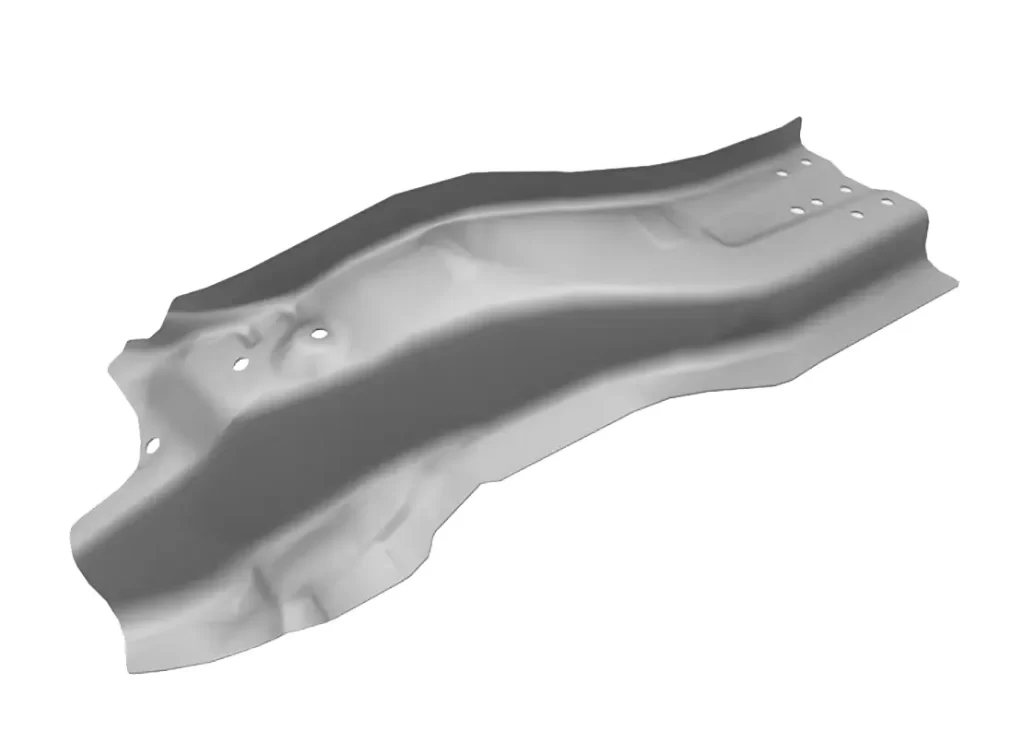
Dual-phase steel is a favored material for structural parts in the automotive industry, owing to its microstructure comprising primarily of ferrite and martensite, with the latter dispersed in the form of islands within the former’s matrix. The steel’s low yield ratio, high work hardening index, and excellent bake hardening value further enhance its suitability for use in automotive applications.
| Grade | YS(MPa) | TS(MPa) | EL(%) | r | n | BH2(MPa) |
| HC420/780DPD+Z | 420-550 | ≥780 | ≥17% | – | – | – |
Grade: HC420/780DPD+Z
C(max): 0.18
Mn(max): 2.5
Si(max): 0.8
The rear longitudinal frame reinforcement front section is a steel plate that is installed at the front section of a vehicle’s rear longitudinal frame. It plays an important role in enhancing the rigidity and stability of the vehicle’s body during operation.
The rear longitudinal frame reinforcement front section is a crucial component of a vehicle’s underbody structure. It is attached to the front section of the rear longitudinal frame and provides reinforcement and support to the body of the vehicle. It also serves as a mounting point for important components such as the rear suspension and rear floor pan.
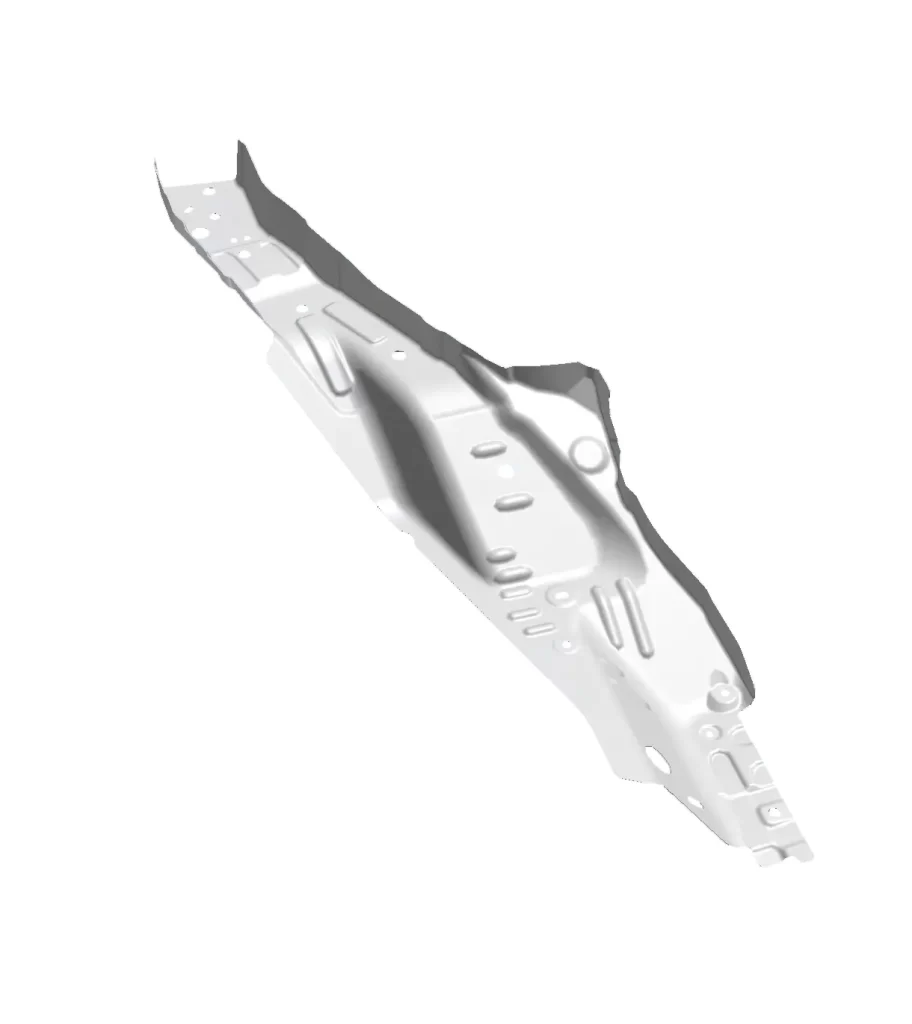
Dual-phase steel is a preferred choice for automotive structural parts due to its microstructure composed primarily of ferrite and martensite, with the martensite structure dispersed in the form of islands within the ferrite matrix. Its low yield ratio, high work hardening index, and excellent bake hardening value further contribute to its suitability for automotive applications.
| Grade | YS(MPa) | TS(MPa) | EL(%) | r | n | BH2(MPa) |
| HC340/590DPD+Z | 290-370 | ≥500 | ≥27% | – | ≥0.15 | – |
Grade: HC340/590DPD+Z
C(max): 0.15
Mn(max): 2.5
Si(max): 0.6
The rear longitudinal frame rear cover is a panel that is installed on the rear section of a vehicle’s longitudinal frame. It is designed to protect and cover the rear longitudinal frame, which is a structural component of the vehicle’s underbody.
The rear longitudinal frame rear cover is typically made of steel or other durable materials that are resistant to corrosion and impact. It is attached to the rear section of the longitudinal frame and provides protection from debris, rocks, and other objects that may hit the frame during operation.
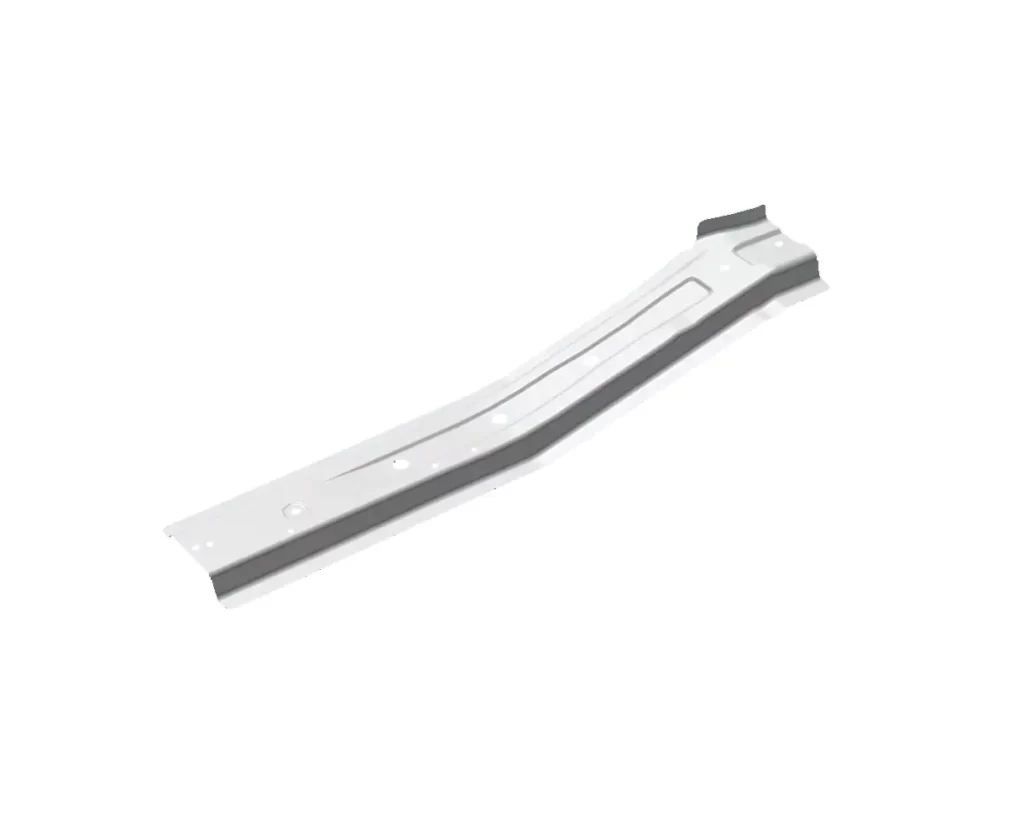
The microstructure of dual-phase steel is predominantly composed of ferrite and martensite, where the latter is dispersed in the form of islands within the former’s matrix. This steel is a top preference for automotive structural parts due to its low yield ratio, high work hardening index, and exceptional bake hardening value, which further enhance its suitability for use in the automotive industry.
| Grade | YS(MPa) | TS(MPa) | EL(%) | r | n | BH2(MPa) |
| HC340/590DPD+Z | 290-370 | ≥500 | ≥27% | – | ≥0.15 | – |
Grade: HC340/590DPD+Z
C(max): 0.15
Mn(max): 2.5
Si(max): 0.6
Our company: Hengqiao(Shanghai) International Trading Limited
The company’s main business is general GMW standard, Fiat EFE standard, Volvo VDA standard, Nissan NEN standard, Volkswagen VW50065, Ford WSS-M and other standard series of automotive steel.
Looking forward to your inquiry!

We are looking forward to your message:
Send RequestFind your contact person directly here:
To our locations